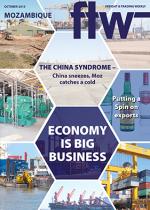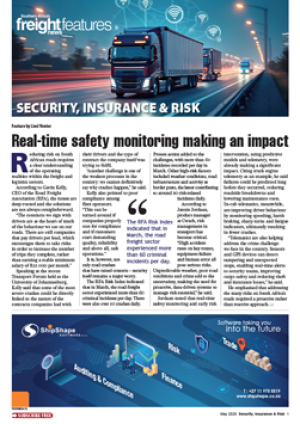A prolonged drought in
neighbouring Malawi
brings threats, opportunities
and responsibilities to the
freight industry serving the
Malawi-Beira corridor and
Malawi-Nacala links.
The threat comes from lower
volumes due to failed crops.
This affects imports of fertiliser
and exports of tobacco, pigeon
peas, sesame seeds and other
crops.
However, this will be
balanced by the opportunity
and responsibility to move food
aid into land-locked Malawi.
Beira and Nacala are the
nearest ports, but some cargo
still moves by road through
Durban and Richards Bay.
An International Monetary
Fund (IMF) team led by Oral
Williams during a September
mission to Malawi identified the
extent of the problem:
“The Malawian economy is
facing difficult challenges due
to weather-related shocks. As a
result, a looming food crisis is
expected to negatively impact
an estimated
2.8 million
persons,”
he says in a
statement.
Real GDP
growth is
projected to fall to 3% in 2015
from 5.7% in 2014, ref lecting
the steep decline in the maize
harvest in addition to weak
private sector investment and
consumption.
Food prices are already being
affected, and a “sharp rise” in
the costs of food was identified
in August this year.
Business confidence is being
affected by a combination of
the drought, high inf lation
and political uncertainty, with
growth in credit to the private
sector remaining “negative in
real terms,” says Williams.
It declined
further in the
face of ongoing
economic
uncertainties,
persistently
high inf lation,
and tight bank lending
conditions.
“Restoring macroeconomic
stability by bringing inf lation
– which has been stuck above
20% since mid-2012 – down to
single digits, remains the key
precondition to fostering and
sustaining growth in the nearto
medium-term,” he adds.
Volumes of imported farming
inputs through the ports of
Beira and Nacala, as well as
exports of produce, are likely to
grow once the rains return.
“Planned reforms to the
farm input subsidy programme
aimed at increasing expenditure
efficiencies are a welcome step,”
says Williams.
There will also be
opportunities for project
cargo should the Malawian
government follow the
recommendations of the IMF.
“Addressing existing
infrastructure bottlenecks is key
to boosting potential growth
and creating job opportunities.
These include improving
transportation infrastructure,
electricity supply, the business
environment, and access to
finance,” says Williams.
INSERT
3% Estimated GDP growth in Malawi in 2015

